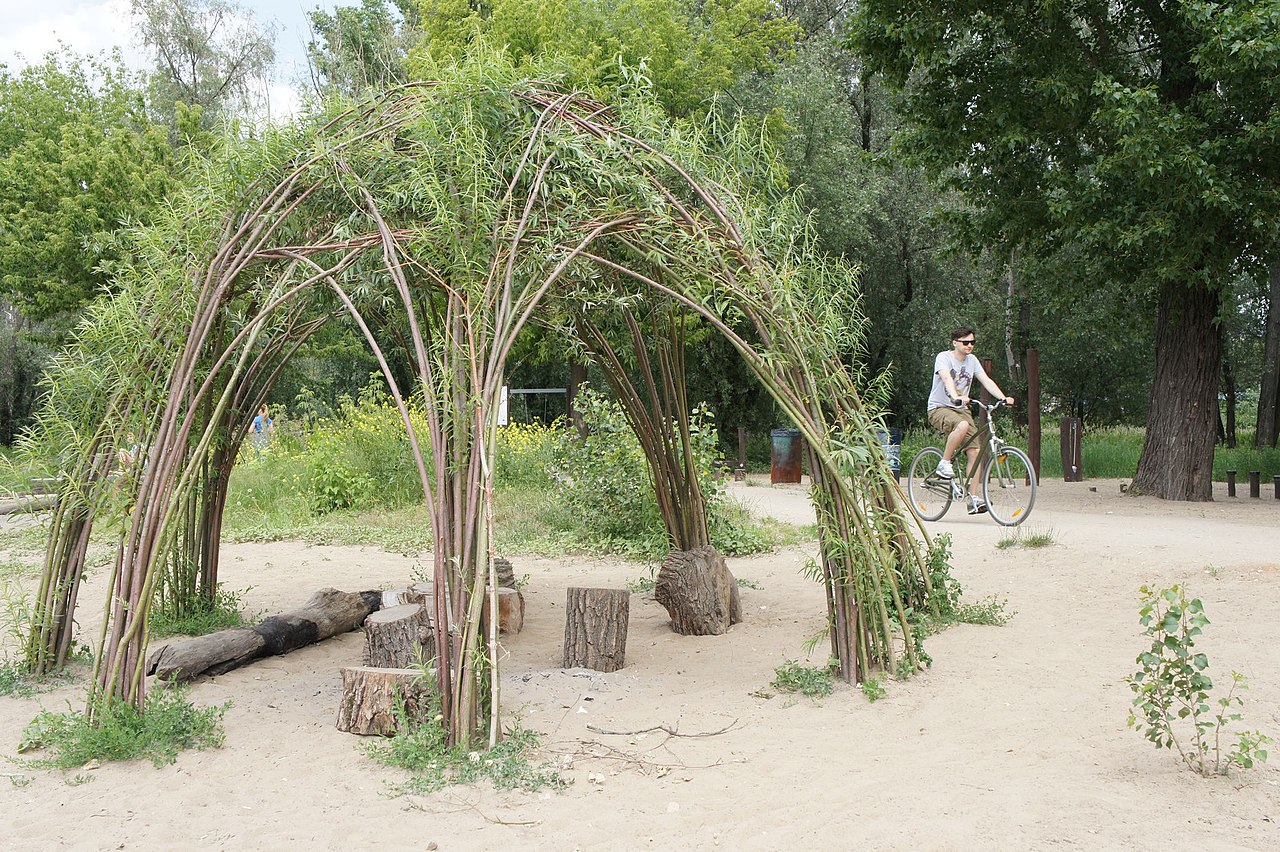Living willow structures offer a delightful and eco-friendly way to enhance your garden or outdoor space. With their easy rooting ability, willow whips can be transformed into attractive and practical structures, including dens, tunnels, shaded seating areas, and more. In this article, we’ll provide you with some general planting advice to get started on creating your own living willow structures.
1. Planting Willow Whips:
Willow whips are essentially bundles of “sticks” that can be easily planted in the ground during winter. When using unrooted cuttings or whips, it’s best to cut and plant them after leaf fall but before leaf bud, typically between early December and late February/early March. The Salix Viminalis ‘Bowles Hybrid’ variety is highly recommended as it produces long, straight, and unbranched whips in just one season of growth.
2. Ideal Soil and Site Preparation:
Willow thrives in a variety of soil conditions but prefers a good moist loamy soil. However, it can adapt well to other soil types too. Before planting, prepare the site by clearing weeds and grass and adding fertilizers or organic matter if necessary. In areas with quick soil drying, incorporating organic matter can help retain moisture. If you face challenges with hares, rabbits, or deer, consider using tree guards to protect your plants.
3. Creating Woven/Criss Cross Fedges (Living Fences/Hedges):
To make attractive living fences or hedges, push the unrooted willow whips at an angle of 45 to 60 degrees into the ground, approximately 12 inches (30 cm) apart along the desired line. Alternate the planting direction to create a criss-cross pattern or weave the whips together for added stability. Additional verticals can be planted and bent to form arches, allowing for creative customization.
4. Building Arches, Tunnels, and Arbours:
For arches, tunnels, and arbours, use the longest and sturdiest willow whips and plant them vertically to create the primary structure. Weave and tie them together for increased stability. Adding diagonals interwoven for strength will form an open lattice feature, and the tension of the willow generally holds the structure rigid even before rooting.
5. Proper Planting Techniques:
When planting, push the whips about 6 to 9 inches (15 cm to 23 cm) into the ground. For denser growth, aim to plant the whips at an angle, as diagonally planted whips tend to sprout along their full length. In March/April, the willow will start to sprout new growth, which can be trimmed back or woven into the structure to encourage denser growth.
6. Maintenance Tips:
To ensure your living willow structure thrives, keep the base clear of weeds and grass, maintaining an approximately 6-inch (15 cm) radius around the planted whips. During dry spells in the first year after planting, provide regular watering to support growth. As new growth becomes long enough, weave it into the original framework to strengthen the structure. Trim any long, thick whips that are not woven in, particularly those on top of the structure, to prevent weakening due to excess weight.
Creating living willow structures is a rewarding and sustainable way to add charm and functionality to your garden. With the right planting techniques and a touch of creativity, you can enjoy unique and environmentally friendly structures that evolve with each passing season. Whether it’s fences, arches, arbours, or play domes, the versatility of willow whips allows you to shape your green haven according to your vision.
Note: In this blog post, I’ve emphasized the usage of specific keywords throughout the content to improve its search engine optimization (SEO) performance. Additionally, the post includes relevant subheadings and practical advice to make it more engaging and informative for readers interested in “willow living structures.”
Frequently Asked Questions (FAQs) about Living Willow Structures:
1. Are living willow structures suitable for all types of gardens?
Living willow structures can be adapted to various garden sizes and layouts, making them a versatile option for many outdoor spaces. Whether you have a small backyard or a larger garden area, you can create living willow features to suit your needs. Additionally, living willow structures can thrive in different soil conditions, making them a viable choice for a wide range of garden environments.
2. How long does it take for a living willow structure to become fully established?
The time it takes for a living willow structure to become fully established can vary based on several factors, such as the willow variety used, weather conditions, and the care provided. Generally, within the first year of planting, you can expect the structure to begin taking shape and displaying new growth. However, it may take two to three years for the structure to reach its full potential and density.
3. Can living willow structures be pruned or trimmed to maintain their shape?
Yes, living willow structures can be pruned and trimmed to maintain their shape and encourage denser growth. Regular pruning can help shape the structure and prevent it from becoming too overgrown. It’s best to carry out pruning during the dormant season in late winter or early spring. By weaving the trimmed branches back into the framework, you can further enhance the structural integrity and visual appeal of your living willow feature.

Leave a Reply